The articles, posts and comments in this tech section are posted by individual members and reflect their personal thoughts and experiences with repairing, maintaining, and generally working on motorcycles. This information may require specific knowledge and skills, may or may not be correct or current to model.
The authors of information found here and the BMW MOA take no responsibility for ensuring the accuracy of any information (including procedures, techniques, parts numbers, torque values, tool usage, etc.), or further for any damage of any kind or injuries incurred or caused by anyone following the instructions or information found here.
It is the duty of the individual to either assume the liability himself for responsibly using the information found here, or to take the bike or accessory to a Dealer or other qualified professional service.
Please ensure you dispose of your used chemicals, oils and fuels in an environmentally responsible manner. Most Auto Parts stores and service stations will accept used oil and lubricants, tires and batteries, please check for your local availability. Here's a link where you can look up a place to dispose of your used fluids (oil, coolant, brake fluid, etc.) - http://earth911.com/
This article, text and photos are Copyright of the individual authors and the BMW MOA, any copying or redistributing is permitted only by prior written authorization.
PLEASE PRINT AND READ ALL THE INSTRUCTIONS BEFORE BEGINNING!
Final note: When in doubt, take your motorcycle to a reputable dealer.
------------------------------------------------------------------------------------------------------------------------------------------------------------------------------------
Renewing the fork oil on your 2013 or later BMW F800GS
Changing the oil in your forks is just as important as any other fluid in your motorcycle. As you ride your bike, your fork oil slowly gets dirtier and loses it's proper oil viscosity. This can result in premature wear and tear on the forks as well as contribute a rougher ride. It's much easier to spend an hour or two of your time along with $15 of fork oil, than have to replace parts in your forks (new forks will run you $2400 at the time of writing).
Note 1: The specific bike shown is a 2013 F800GS using WP forks, older bikes have a similar process, but use a different style of forks (Marzocchi).
Note 2: The tools and materials used are by personal choice and are not due to any affiliation with any brand.
Fluids Required:
SAE 7.5 wt Fork Oil - we need about 1220 milliliters or 41 ounces (1.3 quarts)
Tools Required:
- 24mm socket (preferably 6-sided)
- T25 star (Torx) bit
- T30 star (Torx) bit
- T45 star (Torx) bit
- E12 external star (External Torx) socket
- 17mm socket
- 13mm open end wrench
- Ratchet(s) that fit the above
- Torque wrench
- Suitable way to raise the front wheel and keep the bike steady
- Container to catch the used oil
- Your least favorite shirt/rag
The authors of information found here and the BMW MOA take no responsibility for ensuring the accuracy of any information (including procedures, techniques, parts numbers, torque values, tool usage, etc.), or further for any damage of any kind or injuries incurred or caused by anyone following the instructions or information found here.
It is the duty of the individual to either assume the liability himself for responsibly using the information found here, or to take the bike or accessory to a Dealer or other qualified professional service.
Please ensure you dispose of your used chemicals, oils and fuels in an environmentally responsible manner. Most Auto Parts stores and service stations will accept used oil and lubricants, tires and batteries, please check for your local availability. Here's a link where you can look up a place to dispose of your used fluids (oil, coolant, brake fluid, etc.) - http://earth911.com/
This article, text and photos are Copyright of the individual authors and the BMW MOA, any copying or redistributing is permitted only by prior written authorization.
PLEASE PRINT AND READ ALL THE INSTRUCTIONS BEFORE BEGINNING!
Final note: When in doubt, take your motorcycle to a reputable dealer.
------------------------------------------------------------------------------------------------------------------------------------------------------------------------------------
Renewing the fork oil on your 2013 or later BMW F800GS
Changing the oil in your forks is just as important as any other fluid in your motorcycle. As you ride your bike, your fork oil slowly gets dirtier and loses it's proper oil viscosity. This can result in premature wear and tear on the forks as well as contribute a rougher ride. It's much easier to spend an hour or two of your time along with $15 of fork oil, than have to replace parts in your forks (new forks will run you $2400 at the time of writing).
Note 1: The specific bike shown is a 2013 F800GS using WP forks, older bikes have a similar process, but use a different style of forks (Marzocchi).
Note 2: The tools and materials used are by personal choice and are not due to any affiliation with any brand.
Fluids Required:
SAE 7.5 wt Fork Oil - we need about 1220 milliliters or 41 ounces (1.3 quarts)
Tools Required:
- 24mm socket (preferably 6-sided)
- T25 star (Torx) bit
- T30 star (Torx) bit
- T45 star (Torx) bit
- E12 external star (External Torx) socket
- 17mm socket
- 13mm open end wrench
- Ratchet(s) that fit the above
- Torque wrench
- Suitable way to raise the front wheel and keep the bike steady
- Container to catch the used oil
- Your least favorite shirt/rag
Last edited:

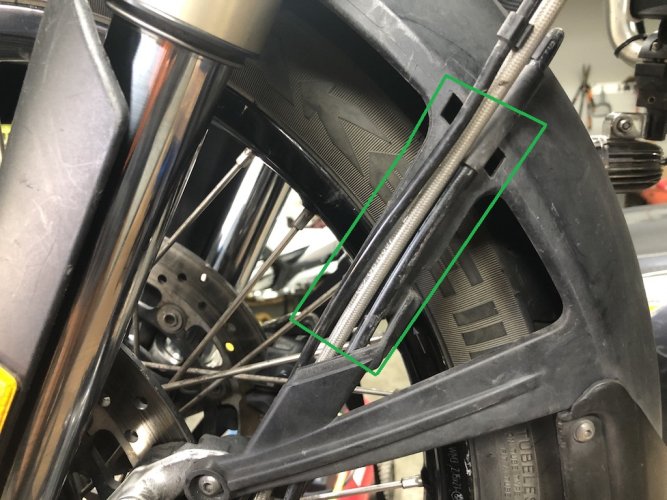

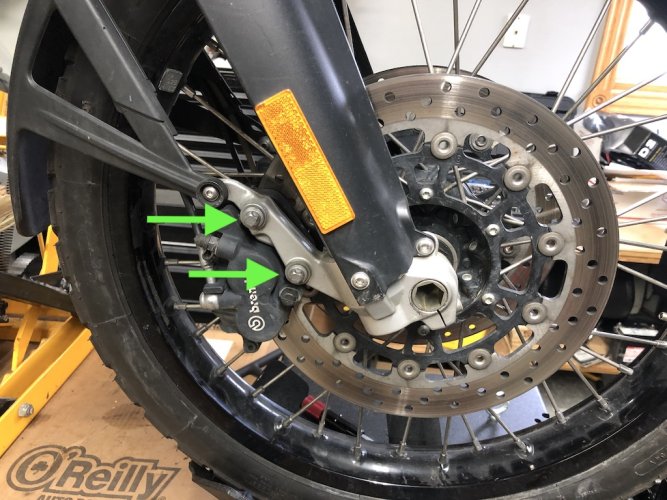



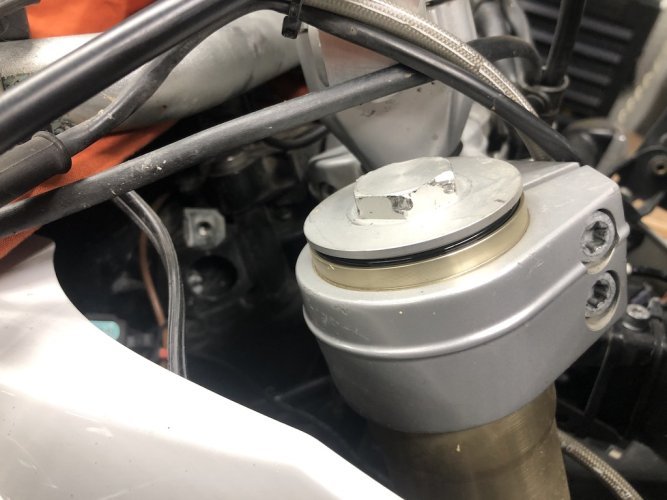


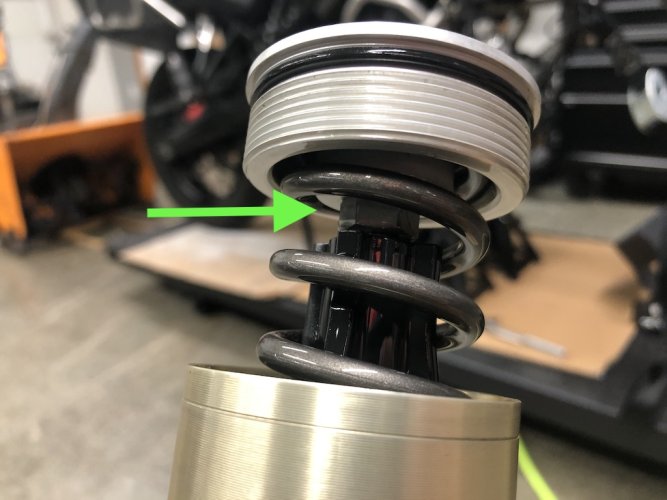



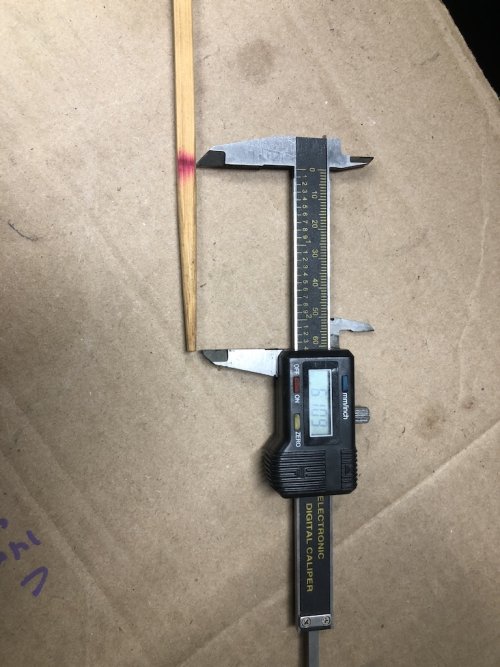


 ), align the mark we made on the edge of the chopstick with the edge of the fork tube, and fill the fork with fluid until the fluid just touches the bottom of the chopstick. Take your time, as it's not easy to remove excess fluid.
), align the mark we made on the edge of the chopstick with the edge of the fork tube, and fill the fork with fluid until the fluid just touches the bottom of the chopstick. Take your time, as it's not easy to remove excess fluid. 
